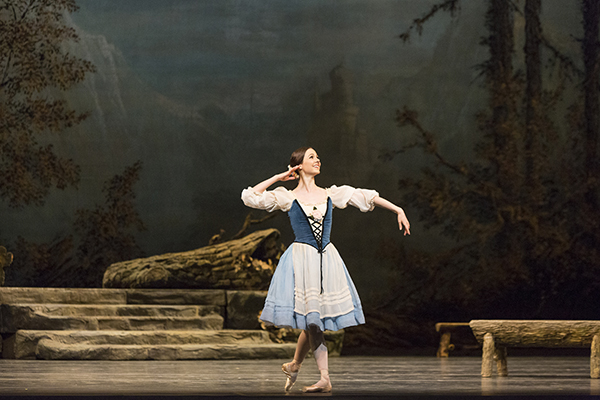Ballet
News+
Giselle: The Ballerina's Hamlet
October 25, 2019

It’s often said those works of art endure that seem to read us as we read them. Shakespeare, naturally, Mozart’s operas, Rembrandt’s self-portraits. And in ballet? Among others, you could make a good case for Giselle. Created in 1841 with a libretto by the French poet Théophile Gautier and choreography by Jean Coralli and Jules-Joseph Perrot, the work, with its gauzy, dream-like textures, its check-list of 19th century literary obsessions and its "volkische" appeal (the Wilis were borrowed from a Slavic legend via the German poet Heinrich Heine) to both earthiness and mystery, has always been the standard reference point for Romantic ballet. And that’s perfectly apt. It is a romantic ballet, in terms of reflecting so many of the intellectual and artistic currents of its age, of representing certain channels of feeling and social attitudes prevalent in European society of the time. But looked at that way, it becomes a curio, a museum piece, lacking the power to still touch us, to shake us up in some way, to make us re-think the foundations (or absence thereof) of our present condition.
And so we have had the ballet re-set in a madhouse, in the Louisiana bayous and, most recently, courtesy of a hybrid spoken word/song and dance extravaganza created by Fabulous Beast Dance Company, in a small town in Ireland where Albrecht is a bisexual line dance instructor from Bratislava. Yes, Giselle is still getting to us, a choreographic Rorschach test, even if the contested fields today are class consciousness, race and the patriarchy.
But what of that traditional ballet, the familiar spooky, spectral, gorgeous, touching ballet blanc reverie that most of us still recognize Giselle being? That story of love, betrayal, revenge and forgiveness that strikes a chord because, despite the formal adherence to an earlier aesthetic (or perhaps because of it), those themes never do get old. Can we still experience that story unoccluded by theory, in its emotional openness, its agonized beauty? Giselle is a pivotal ballet because it both looks back almost nostalgically to a romanticism that was beginning to fade, and points ahead to the challenges and preoccupations of symbolism, of interiority, of abstraction, that modern ballet would take up. And that gives its story a special meaning and place both in the history of ballet and in the history of self-understanding. We still want to hear that story and to see it danced.
At the heart of the ballet is the title character. In fact, although the work boasts some of the most haunting and distinctive corps dancing in any ballet and despite how richly suggestive the other characters are, it’s safe to say that Giselle is Giselle. The role is often described as a “testing ground” for ballerinas, not just because of the demands of its technique, but because it is so emotionally exacting. Of course, that is often code for “it has a mad scene,” which tends to fold it into such staples of exquisite, male-conceived female derangement as Lucia di Lammermoor or a raft of other 19th century operas. But Giselle as a character is more than her madness, and although her emotional collapse, which is brought about by her heartbreak and which brings on her death, is the ballet’s famous showstopper, what completes Giselle is her transformational arc: she dies for love and then gets to come back as a spirit to save the man who betrayed her. That’s the ultimate romantic gesture: her revenge is her forgiveness.
Giselle is onstage November 6 – 10, 2019.